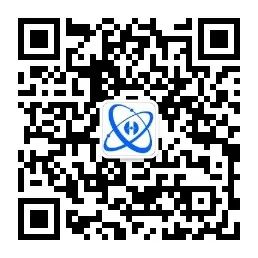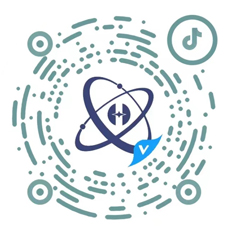With enough light, you can see what people once thought impossible. Large scale light source equipment produces this powerful light. Scientists use it to make more durable materials, make more efficient batteries and computers, and learn more about the natural world.
When it comes to building these large installations, space is money. If you can get higher energy beams from smaller devices, you can save millions of construction costs. With the opportunity to greatly improve the existing light source capacity, you have the motivation behind a project that brings together scientists from the three national laboratories of the US Department of Energy.
This team has just achieved an important milestone, which has been going on for more than 15 years: they have designed, manufactured and comprehensively tested a new prototype magnet with a length of half a meter, which meets the use requirements of existing and future light source devices.

The half meter long Nb Sn superconducting wiggle magnet prototype was designed and manufactured by a team of three national laboratories of the US Department of Energy. The next step will be to build a meter long version and install it on Argonne's advanced light source. Picture: Ibrahim Kaskin, Argonne National Laboratory.
According to Efim Gluskin, an outstanding researcher at the Argonne National Laboratory of the Ministry of Energy, the next step is to expand the scale of this prototype, build a prototype more than one meter long, and install it on the advanced light source of the device in the Argonne Scientific User Office of the Ministry of Energy. But he said that although these magnets will be compatible with light sources such as APS, the real investment here lies in the next generation devices that have not been built.
"The real scale of this technology is for future free electron laser equipment," Gluskin said. "If you reduce the size of the equipment, you will reduce the size of the tunnel. If you can do this, you can save tens of millions of dollars. This will produce huge changes."
This long-term goal prompted Gluskin and his Argonne colleagues to cooperate with scientists from Lawrence Berkeley National Laboratory and Fermi National Accelerator Laboratory. For decades, each laboratory has been studying superconducting technology, and in recent years, it has been committed to researching and developing a compound that combines niobium and tin.
This material is still superconducting, which means that it has no resistance to the current flowing through it, even though it generates a high magnetic field, which makes it very suitable for making so-called wave magnets. Light sources such as APS generate photon beams (particles of light) by absorbing the energy released by electrons as they circulate through the storage ring. A wave magnet is a device that converts energy into light. The higher the magnetic field you can use it to generate, the more photons you can generate from a device of the same size.
Now there are some superconducting surge magnets installed on APS, but they are made of Nb Ti alloy and have been standard materials for decades. According to Soren Prestemon, a senior scientist at Berkeley Laboratory, Nb Ti superconductors are suitable for low magnetic fields. They will no longer superconduct at about 10 Tesla. (This is about 8000 times the strength of ordinary refrigerator magnets.)
"Niobium-3-tin is a more complex material," Prestemon said, "but it can transmit current under a higher magnetic field. Its superconductivity is as high as 23 Tesla. At a lower magnetic field, its current carrying capacity is three times that of Niobium titanium. These magnets are kept at a low temperature of 4.2 Kelvin (about minus 450 degrees Fahrenheit) to maintain superconductivity."
Prestemon began Berkeley's Niobium-3-Sn research project as early as the 1980s. This new design was developed in Argonne based on the previous work of Prestemon and his colleagues.
He said: "The design of this Nb Sn undulator not only conforms to the current specifications, but also has passed the comprehensive test on the quality of beam transmission magnetic field".
According to Sasha zlobin, Fermilab began to study this material in the 1990s, where he initiated and led the Niobium-3-Sn magnet project. Fermilab's Nb-3-Sn project focuses on the superconducting magnets of particle accelerators, such as the Large Hadron Collider at CERN in Switzerland and the PIP-II linear accelerator to be built at Fermilab's site.
"Our high field strength Nb Sn magnets have been successful," Zlobin said "We can apply this knowledge to superconducting undulators based on this superconductor."
The research team said that part of this process is to learn how to avoid premature quenching of the magnet when it is close to the required magnetic field level. When the magnet loses the ability to conduct current without resistance, the resulting backlash is called quenching, which eliminates the magnetic field and may damage the magnet itself.
The team will report in IEEE Journal of Applied Superconductivity that their new equipment can hold nearly twice the current of Nb Ti superconducting undulator used in APS under higher magnetic field.
The project draws on Argonne's experience in manufacturing and operating superconducting undulators, as well as the knowledge of Berkeley and Fermilab on Nb-3-Sn. Fermilab helped guide this process, provided suggestions for the selection of superconducting wires, and shared the new development of superconducting wire technology. Berkeley designed an advanced system that uses advanced computing techniques to detect quenching and protect magnets.
In Argonne, the prototype was designed, manufactured, assembled and tested by a group of engineers and technicians under the guidance of Ibrahim Kesgin, the project manager. Members of the APS superconducting undulator team led by Yury Ivanyushenkov contributed to the design, construction and testing.
The research team plans to install their complete prototype in Zone 1 of APS, which will be completed next year. This zone uses high-energy photon beams to peek at thicker material samples. This will be the test site of the equipment, indicating that the equipment can work under the designed light source. However, Gruskin said, people's vision is to transfer the technologies of niobium titanium and niobium 3-tin to industrial partners and manufacture these equipment for future high-energy light source facilities. Gluskin said: "The key is to work steadily and persistently with the support of the laboratory and DOE research and development fund." "Achieving this is gradual progress."









To help you create a new intelligent production mode of "industrial interconnection, lean production and intelligent manufacturing"
 No. 5009, Jindoushan Road, Laishan District, Yantai, Shandong
No. 5009, Jindoushan Road, Laishan District, Yantai, Shandong
 Manager Chu +86 15563879208
Manager Chu +86 15563879208
 +86-535-6778627
+86-535-6778627
 maxclx@foxmail.com
maxclx@foxmail.com
 Monday to Friday: morning9:00-afternoon17:00
Monday to Friday: morning9:00-afternoon17:00